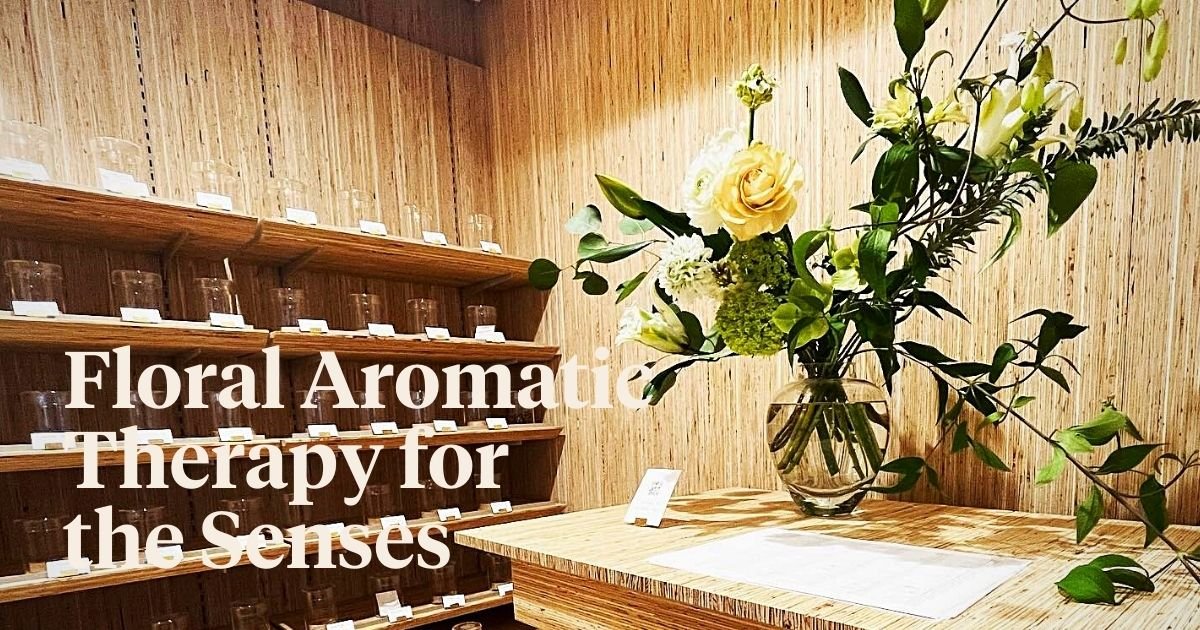Located in the always vibrant neighborhood of Harajuku, Tokyo, AEAJ Green Terrace is a sensory escape that blends aromatherapy, sustainable design, and Tokyo’s vibrant culture, with a blend of architecture, nature, and botanicals. A unique and seamless integration of soothing scents. Conceived by the Aroma Environment Association of Japan (AEAJ), this innovative facility offers a peaceful respite from the hustle and bustle of the city.
Designed by renowned designer Kengo Kuma, AEAJ Green Terrace promotes the physical and mental health of guests while promoting environmental protection through the phenomenon of aromatherapy in a harmonious relationship with nature.
Architecture that combines tradition and modernity
Kengo, the architect behind AEAJ Green Terrace, skillfully combines traditional and contemporary elements in the design of this stunning building. The building showcases his signature style, blending seamlessly with the surrounding environment while offering all the benefits of natural aromatherapy.
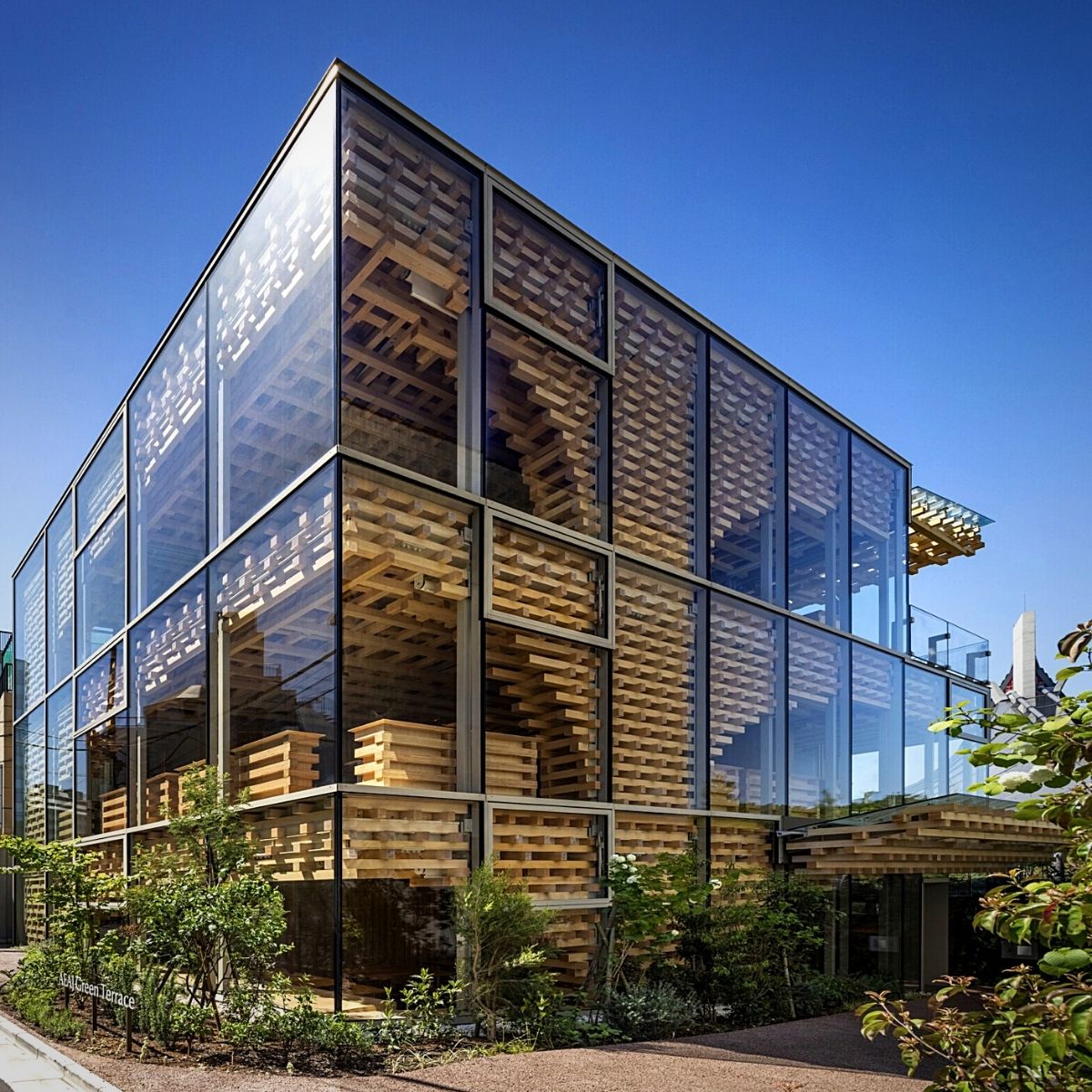
Photo credit: @forgemind
Standing at the intersection of tradition and modernity, AEAJ Green Terrace captivates guests with a plan that features three stories of floor-to-ceiling windows and framed timber beams. This construction technique is reminiscent of traditional Japanese carpentry used in shrines and temples, and requires minimal use of nails and hardware and the careful alignment and shaping of wood.
Inside, wooden beams span the ceiling and walls, strategically allowing natural light to filter in. This effect, known as “komorebi” in Japanese, evokes the mesmerizing play of sunlight penetrating a dense forest. The use of natural materials and the incorporation of traditional building techniques creates a serene atmosphere that reconnects all visitors with nature and themselves.
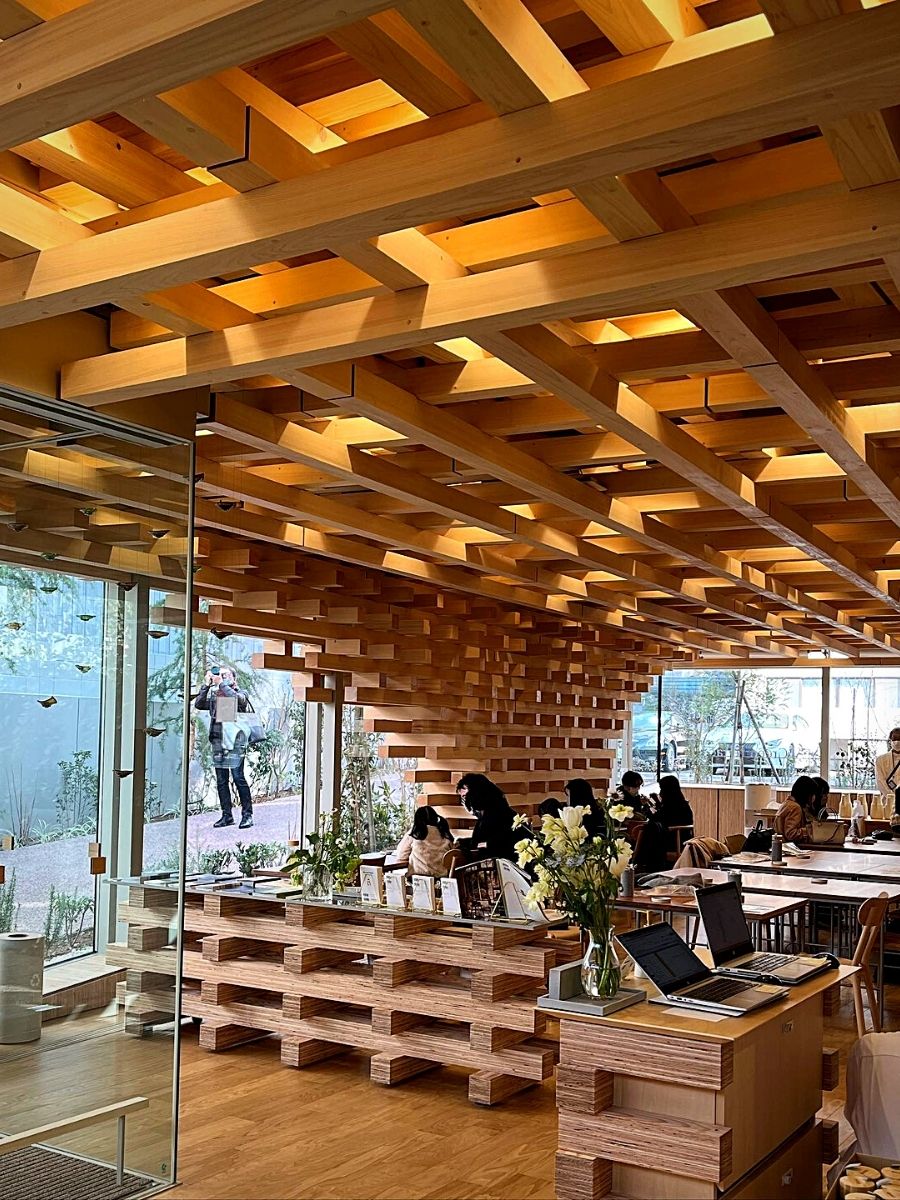
Photo credit: @herbal_d_m
Sustainable construction and environmental conservation efforts
AEAJ Green Terrace promotes environmental awareness through sustainable architectural practices in a variety of ways. First, the building’s architectural design incorporates sustainable materials, with a particular emphasis on wood. Architect Kengo uses sustainably harvested wood through thinning methods that ensure the health and vitality of forests. This approach reduces ecological impacts associated with construction materials and promotes responsible forestry practices.
The main environmental benefit of using wood in construction is its ability to sequester carbon dioxide. As trees grow, they absorb carbon dioxide from the atmosphere, effectively acting as carbon sinks. By using wood in its construction, the building offsets the carbon emissions produced by alternative building materials such as concrete and steel.
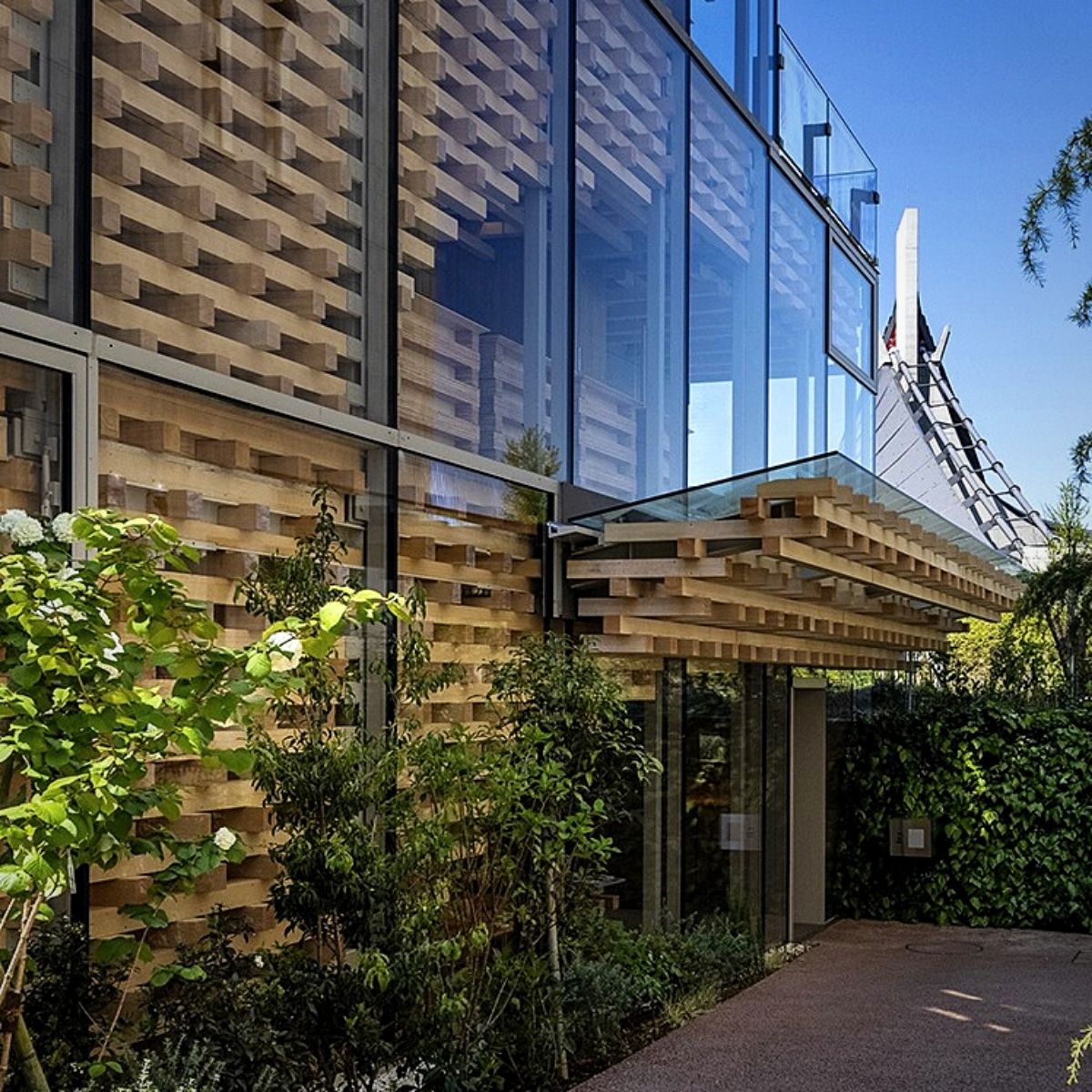
Photo credit: @forgemind
AEAJ Green Terrace also incorporates energy-efficient design elements to minimize energy consumption. The extensive use of floor-to-ceiling windows floods the interior spaces with natural light, reducing reliance on artificial lighting during the day. Additionally, strategically placed windows promote natural ventilation, reducing the need for mechanical cooling systems and promoting energy efficiency.
Similarly, it indicates waste reduction and recycling obligations. Clay tiles, a traditional feature of Japanese architecture, are recycled and reused in the front walkway, making new use of materials that would otherwise have been discarded. The creative transformation of recycled essential oil vials into works of art further demonstrates the building’s commitment to material reuse and waste reduction.

Photo credit: @ncafe.tsubomi
Additionally, it serves as an educational platform to raise awareness about sustainable construction practices. The building provides visitors with insight into the importance of responsible forestry, carbon offsets and the environmental impact of various construction materials. This is achieved by introducing sustainable design principles and practices.
By integrating these sustainable architectural practices, AEAJ Green Terrace presents an example of green architecture. This highlights the important role buildings can play in reducing carbon emissions, promoting responsible resource management and appreciating sustainable living.
By incorporating nature and sustainable practices into Tokyo’s active urban landscape, we also set an example for future sustainable architecture and contribute to the larger movement towards building greener, more sustainable cities. Masu.

Photo credit: @risa.yoga.rose
As cities grapple with the challenges of urbanization and the need for green spaces that prioritize tranquility and well-being, the integration of nature and aromatherapy can provide a plan to create a welcoming environment that benefits both people and communities. can.
Incorporating the power of nature and aromatherapy into your health
The AEAJ Green Terrace is not only a visually stunning architectural phenomenon, but also a sanctuary that demonstrates the well-being-enhancing effects of natural and floral arrangements. The sustainably harvested wood selected by Kengo is obtained through a thinning method that retains more nutrients for stronger trees and reflects AEAJ’s environmental values. Unlike concrete, wood absorbs carbon throughout its life, offsetting transport emissions and contributing to a greener environment.

Photo credit: @forgemind
(You may also be interested in reading about different flowers used in aromatherapy and their floral scents.)
Additionally, the building’s exterior embodies the concept of reuse. Recycled clay roof tiles, a hallmark of Japanese architecture for centuries, were crushed and formed into the front walkway, and recycled essential oil vials were transformed into sunlight-reflecting works of art, highlighting human creations. It symbolizes the harmony of nature.
In addition to its architectural elements, the AEAJ Green Terrace includes an aroma corridor that is home to approximately 43 species of plants, some of which serve as raw materials for essential oils. This biodiverse space not only showcases the beauty of nature, but also serves as a learning ground that emphasizes the importance of preserving plant species.
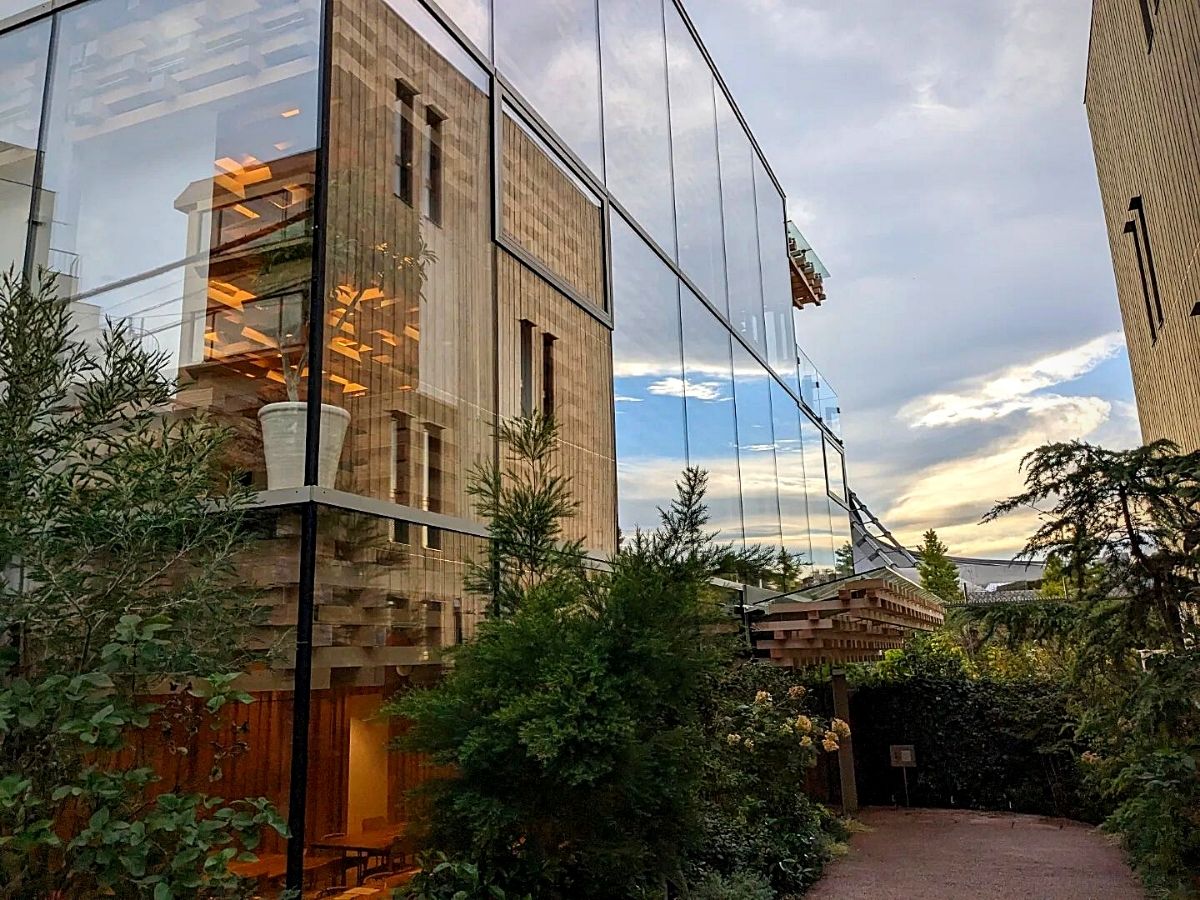
Photo credit: @ohanachan39
The aroma corridor also emphasizes the connection between nature and aromatherapy. This biodiverse space has been carefully managed to provide visitors with an immersive olfactory experience. Designed with the image of a nature path, it reminds you of strolling through a lush forest or garden filled with a variety of plants, each with its own unique scent and soothing properties. Scents range from soothing floral notes to refreshing citrus aromas, providing a diverse olfactory experience.
This space offers relaxation, rejuvenation and connection with nature, with aromatic scents having a calming effect on the mind and body, promoting a sense of well-being by reducing stress. Essentially, immersive experiences encourage visitors to slow down, take deep breaths, and fully engage their senses in order to connect more deeply with the natural world.

Photo credit: @risa.yoga.rose
Fundamentally, the transformative power of aromatherapy is a key element of AEAJ Green Terrace, and as you enter the building, you are greeted by the calming scent of cypress, setting the stage for a unique sensory journey.
Similarly, the building’s aroma laboratory offers a wide range of fragrances, with over 300 aromas from around the world. Here you can experience a variety of scents, from refreshing yuzu, a popular citrus fruit in Japan, to salo, a plant used by herbalists in western Madagascar.
The Aroma Lounge immerses visitors in a space of fragrant delight with a rotating selection of blends inspired by literary works. Meanwhile, AEAJ’s Periodicals and Aroma Library features a collection of his 1,400 books in multiple languages, a valuable resource for anyone interested in delving deeper into the science and art of aromatherapy. We provide resources.
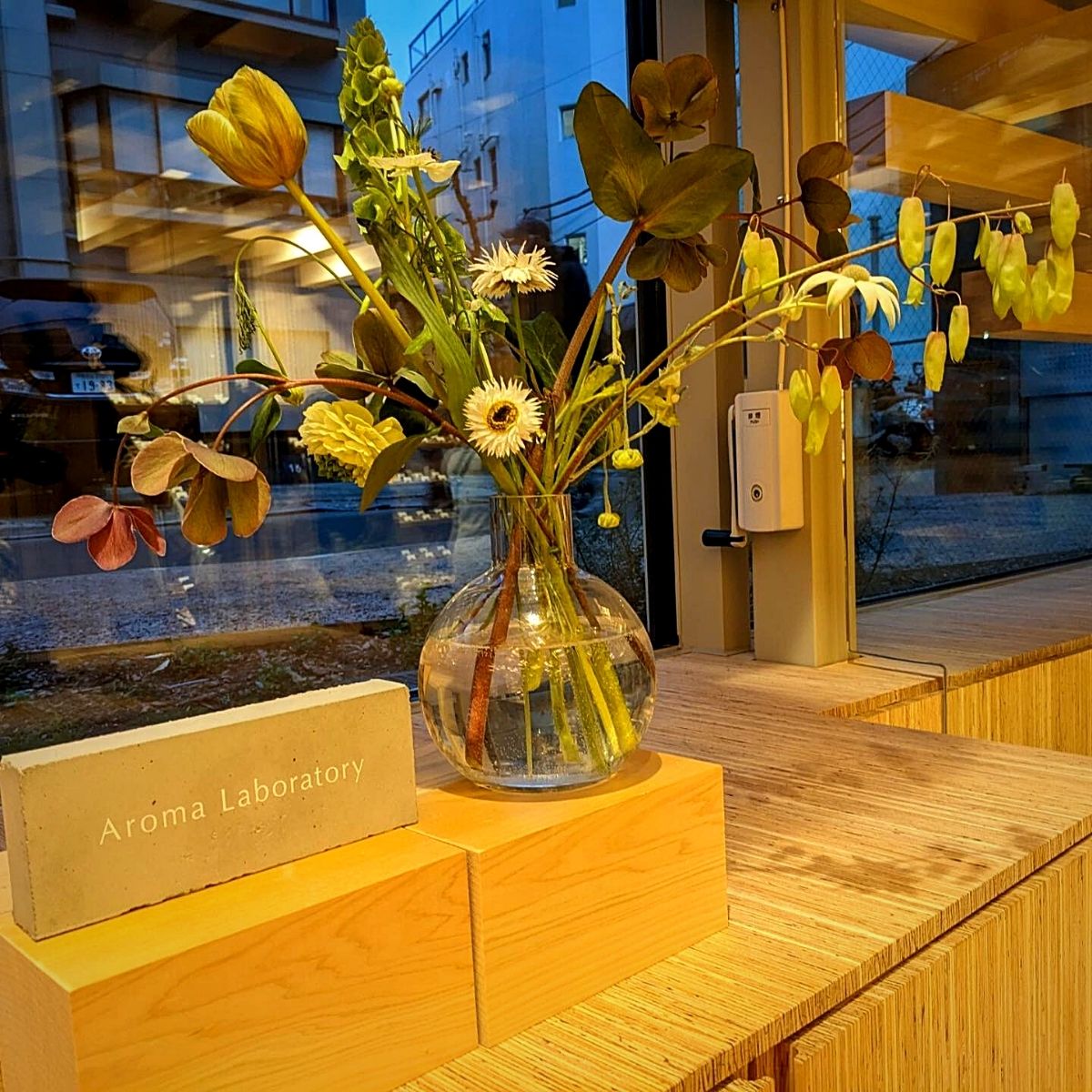
Photo credit: @nontan_tantan
The relaxing power of aromatherapy
Aromatherapy, also known as essential oil therapy, is the practice of using natural oils extracted from flowers, bark, stems, leaves, roots, or other parts of plants to enhance psychological and physical health. The term “aromatherapy” was coined by French perfumer and chemist René-Maurice Gattefosse in his 1937 book on the subject. He previously discovered the healing potential of lavender in the treatment of burns, and his book discusses its use. Use of essential oils in the treatment of medical conditions.
Aromatherapy, which is considered both an art and a science, has recently gained attention in the scientific and medical fields. It can help manage pain, improve digestion, promote relaxation, improve mood, and reduce menstrual symptoms, among other benefits.
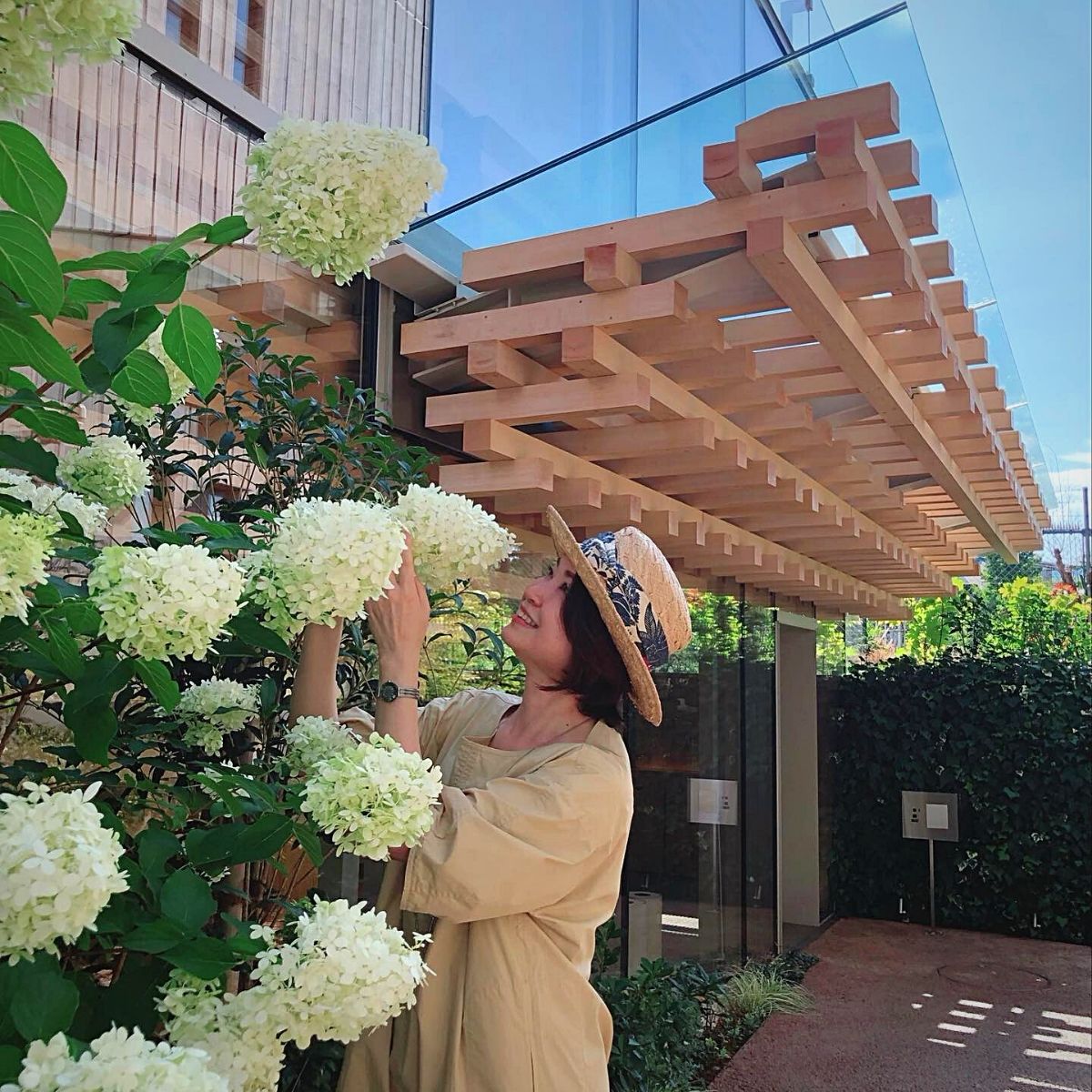
Photo credit: @hayu_ki_14
It also improves sleep quality, reduces stress, agitation, and anxiety, relieves joint pain, treats headaches and migraines, reduces chemotherapy side effects, relieves discomfort during childbirth, reduces bacterial Fights viruses, fungi, improves digestion, improves hospice and relaxation. care and generally boost immunity.
In essence, AEAJ Green Terrace is an all-round heaven for the senses. Please, try it. Yet it paves the way for a more rounded and sustainable future.
The eye-catching image is by @hayu_ki_14, and the header image is by @kagurazaka_syuca.

